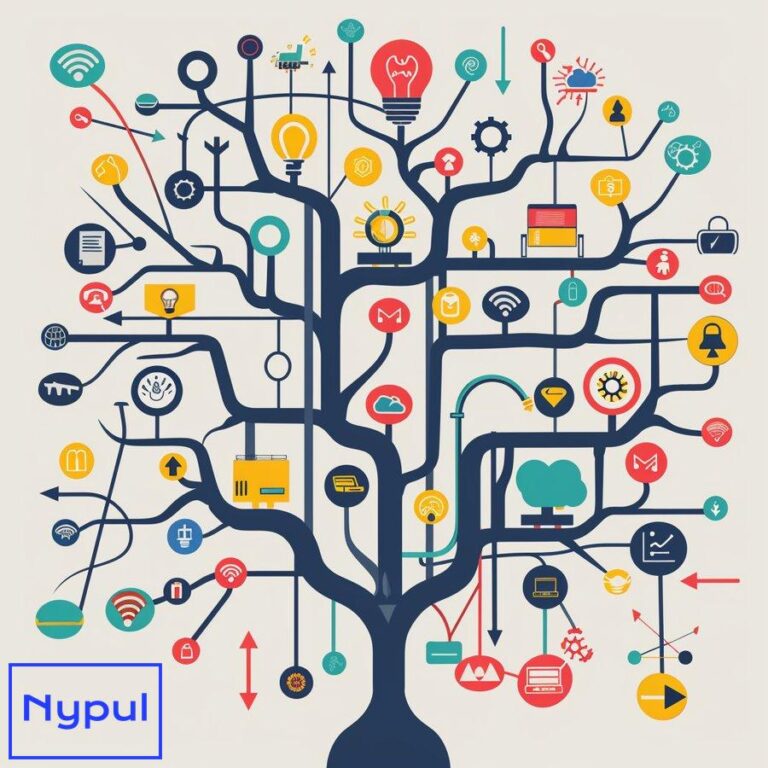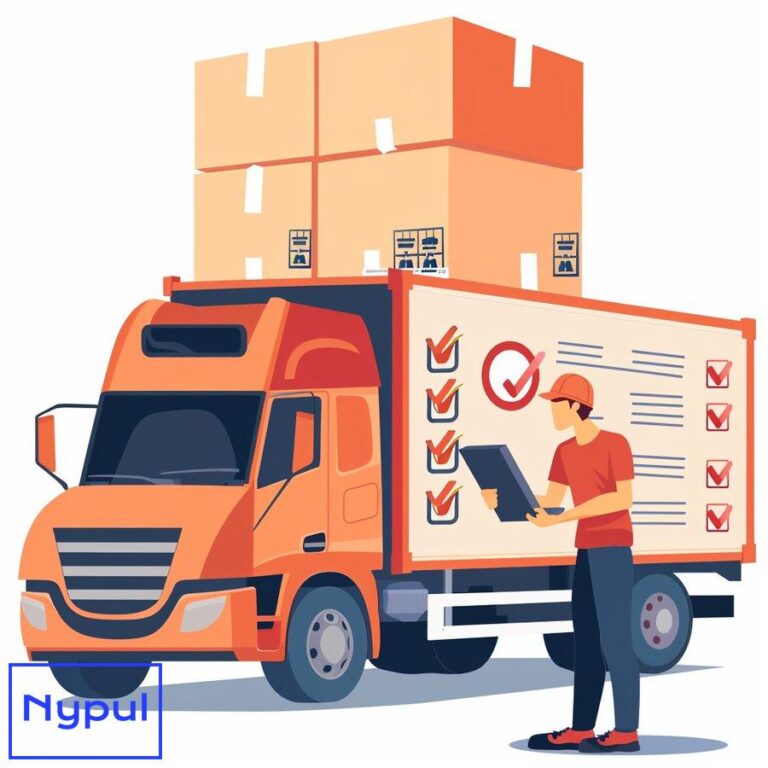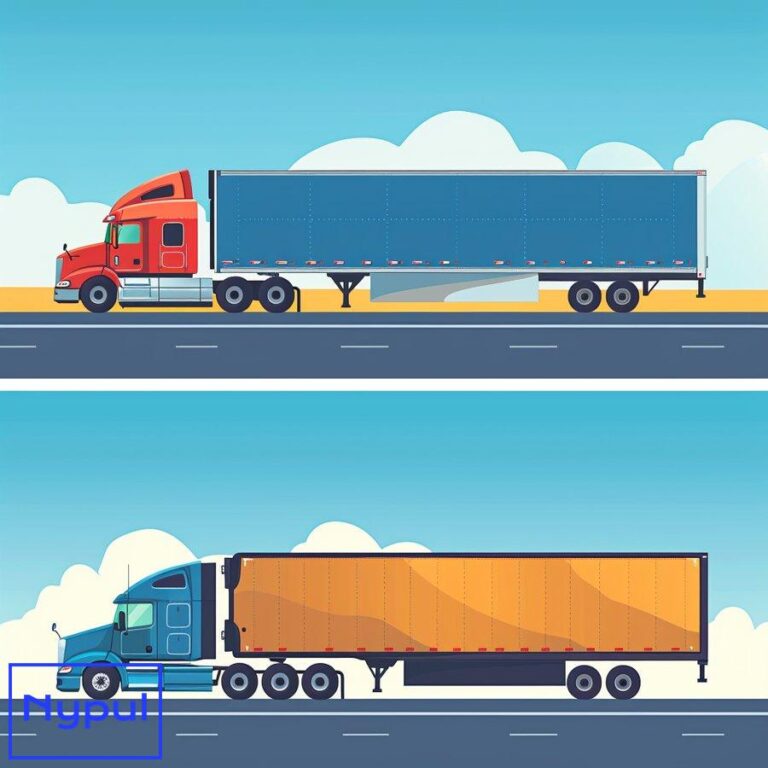What Are the Three Main Risks to Be Considered in Transportation
Why is risk assessment crucial in transportation?

Risk assessment is a vital process in the transportation industry that involves identifying, evaluating, and prioritizing potential threats to ensure the safe and efficient movement of goods and people. By proactively assessing risks, transportation companies can develop effective strategies to mitigate or eliminate potential hazards, ultimately protecting their assets, employees, and customers.
![]()
One of the primary reasons risk assessment is crucial in transportation is its role in ensuring operational continuity. Transportation networks are complex systems that rely on the seamless interaction of various components, such as vehicles, infrastructure, personnel, and technology. Any disruption to these components can lead to significant delays, financial losses, and reputational damage. By conducting thorough risk assessments, transportation companies can identify potential points of failure and develop contingency plans to maintain operations during adverse events.
Risk assessment also plays a critical role in enhancing safety within the transportation sector. Transportation accidents can result in injuries, fatalities, and substantial property damage. By identifying and addressing potential safety hazards, such as poor vehicle maintenance, inadequate driver training, or hazardous road conditions, transportation companies can significantly reduce the likelihood of accidents occurring.
Furthermore, risk assessment helps transportation companies comply with regulatory requirements and industry standards. Governments and regulatory bodies often mandate specific safety measures and risk management practices to ensure the well-being of employees, passengers, and the general public. Failure to comply with these regulations can result in hefty fines, legal liabilities, and the suspension or revocation of operating licenses.
| Risk Category | Potential Impact | Mitigation Strategies |
|---|---|---|
| Cyber Attacks | Data breaches, system disruptions, financial losses | Implementing robust cybersecurity measures, employee training, incident response plans |
| Economic Slowdowns | Reduced demand, financial instability, layoffs | Diversifying revenue streams, cost optimization, building financial reserves |
| Supply Chain Disruptions | Delays, shortages, increased costs | Developing resilient supply chains, multi-sourcing, inventory management |
In summary, risk assessment is a crucial process in the transportation industry that enables companies to identify, evaluate, and prioritize potential threats. By proactively addressing risks, transportation companies can ensure operational continuity, enhance safety, comply with regulations, and protect their assets, employees, and customers.
What are the vulnerabilities of transportation systems to cyber attacks?
Transportation systems have become increasingly reliant on advanced technologies, such as automated control systems, GPS navigation, and connected vehicles, to optimize operations and enhance efficiency. However, this growing dependence on technology has also exposed the transportation sector to various cyber vulnerabilities.
One of the primary vulnerabilities of transportation systems to cyber attacks is the interconnectedness of their networks. Transportation companies often rely on complex, interconnected networks to manage their operations, including communication systems, traffic control systems, and passenger information systems. These networks, if not adequately secured, can provide entry points for cybercriminals to infiltrate the system and cause disruptions.

Another significant vulnerability is the use of legacy systems and outdated software. Many transportation companies still rely on older technologies that may not have been designed with modern cybersecurity threats in mind. These legacy systems often lack the necessary security features and updates, making them more susceptible to cyber attacks.
The increasing use of Internet of Things (IoT) devices in transportation, such as sensors, cameras, and connected vehicles, also presents new vulnerabilities. IoT devices often have limited security features and can be easily compromised by hackers, providing them with access to sensitive data or control over critical systems.
Furthermore, the human factor plays a significant role in the vulnerability of transportation systems to cyber attacks. Employees who lack proper cybersecurity training or awareness may inadvertently expose the organization to risks through actions such as clicking on malicious links, using weak passwords, or falling victim to social engineering tactics.
Potential Cyber Attack Scenarios in Transportation
- Ransomware attacks that encrypt critical data and demand payment for its release
- Malware infections that disrupt operations or steal sensitive information
- Hacking of traffic control systems, leading to accidents or gridlock
- Compromised connected vehicles, allowing attackers to control or manipulate vehicle functions
- Denial-of-service attacks that overwhelm transportation networks and cause system failures
To address these vulnerabilities, transportation companies must implement robust cybersecurity measures, such as:
- Regularly updating and patching software and systems
- Implementing strong access controls and authentication mechanisms
- Encrypting sensitive data both at rest and in transit
- Conducting regular cybersecurity training and awareness programs for employees
- Developing and testing incident response plans to minimize the impact of potential cyber attacks
By proactively addressing these vulnerabilities and implementing effective cybersecurity measures, transportation companies can significantly reduce their risk exposure and ensure the safe and reliable operation of their systems.
How do economic slowdowns impact transportation operations?
Economic slowdowns can have a profound impact on transportation operations, as the demand for goods and services often declines during periods of economic uncertainty. This reduced demand can lead to a range of challenges for transportation companies, affecting their financial stability, workforce, and overall operational efficiency.
One of the primary ways economic slowdowns impact transportation operations is through decreased shipping volumes. As consumers and businesses reduce their spending during a recession, the demand for transportation services, such as freight shipping and passenger travel, typically declines. This reduction in shipping volumes can result in lower revenue for transportation companies, forcing them to make difficult decisions to maintain profitability, such as reducing their workforce or scaling back operations.
Economic slowdowns can also lead to increased competition within the transportation industry. As demand decreases, transportation companies may engage in price wars to attract customers and maintain market share. This increased competition can put pressure on profit margins and force companies to operate on thinner margins, leaving them more vulnerable to financial instability.
Furthermore, economic slowdowns can impact the availability and cost of essential resources for transportation operations, such as fuel and labor. During a recession, oil prices may become more volatile, leading to fluctuations in fuel costs that can significantly impact transportation companies’ bottom lines. Additionally, economic uncertainty can lead to a reduction in the available workforce, as individuals may seek more stable employment opportunities in other industries.
Potential Impacts of Economic Slowdowns on Transportation Operations
- Reduced shipping volumes and passenger travel
- Increased competition and pressure on profit margins
- Volatile fuel prices and increased operating costs
- Workforce reductions and difficulty attracting and retaining talent
- Delayed investments in infrastructure, technology, and fleet upgrades
To mitigate the impact of economic slowdowns on transportation operations, companies can implement various strategies, such as:
- Diversifying their customer base and exploring new market opportunities
- Optimizing routes and improving operational efficiency to reduce costs
- Implementing flexible pricing strategies to remain competitive while maintaining profitability
- Developing strong relationships with key customers to ensure long-term business stability
- Investing in technology and automation to streamline processes and reduce labor costs
By proactively preparing for economic slowdowns and implementing effective strategies to mitigate their impact, transportation companies can build resilience and ensure their long-term success in the face of economic uncertainty.
What causes supply chain disruptions in transportation?

Supply chain disruptions in transportation can have far-reaching consequences, affecting the timely delivery of goods and services and causing significant financial losses for businesses. These disruptions can stem from a variety of factors, ranging from natural disasters and geopolitical events to labor shortages and infrastructure failures.
One of the primary causes of supply chain disruptions in transportation is natural disasters, such as hurricanes, floods, and earthquakes. These events can damage critical transportation infrastructure, such as roads, bridges, and ports, making it difficult or impossible to move goods through affected areas. Additionally, natural disasters can disrupt power supplies and communication networks, further complicating transportation operations.
Geopolitical events, such as trade disputes, tariffs, and political instability, can also cause significant supply chain disruptions in transportation. These events can lead to increased costs, delays, and uncertainty in international shipping, as companies navigate complex trade regulations and shifting political landscapes.
Labor shortages and strikes within the transportation industry can also contribute to supply chain disruptions. The transportation sector relies heavily on skilled workers, such as drivers, pilots, and logistics professionals, to keep goods moving. When there is a shortage of qualified workers or labor disputes arise, it can lead to delays, reduced capacity, and increased costs.
Infrastructure failures, such as road closures, port congestion, and equipment breakdowns, can also cause supply chain disruptions in transportation. These failures can result from a lack of investment in maintenance and upgrades, as well as unexpected events like accidents or weather-related damage.
Common Causes of Supply Chain Disruptions in Transportation
- Natural disasters (e.g., hurricanes, floods, earthquakes)
- Geopolitical events (e.g., trade disputes, tariffs, political instability)
- Labor shortages and strikes
- Infrastructure failures (e.g., road closures, port congestion, equipment breakdowns)
- Cyberattacks targeting transportation systems
- Pandemics and public health crises
To minimize the impact of supply chain disruptions in transportation, companies can adopt various strategies, such as:
- Developing resilient supply chain networks with multiple sourcing options and alternative transportation routes
- Investing in advanced technologies, such as real-time tracking and predictive analytics, to improve visibility and responsiveness
- Fostering strong relationships with suppliers, partners, and customers to enable effective communication and collaboration during disruptions
- Implementing robust risk management and business continuity plans to quickly respond to and recover from disruptions
- Regularly assessing and updating infrastructure and equipment to ensure reliability and minimize the risk of failures
By understanding the causes of supply chain disruptions in transportation and implementing proactive strategies to mitigate their impact, companies can build more resilient and adaptable supply chains that can withstand the challenges of an increasingly complex and interconnected global economy.
How do transportation risks interact and compound?

Transportation risks rarely occur in isolation; instead, they often interact and compound, creating complex challenges that can amplify their impact on operations, financial stability, and customer satisfaction. Understanding how these risks interact and compound is crucial for developing effective risk management strategies and building resilience within the transportation industry.

One way transportation risks interact and compound is through the interdependencies between different modes of transportation. For example, a disruption in the rail network can lead to increased demand for trucking services, putting pressure on road infrastructure and leading to congestion and delays. Similarly, a shutdown at a major port can disrupt shipping schedules, causing a ripple effect throughout the supply chain and affecting multiple modes of transportation.
Cybersecurity risks can also interact and compound with other transportation risks. A successful cyberattack on a transportation company’s IT systems can lead to operational disruptions, such as the inability to track shipments or communicate with drivers. This, in turn, can cause delays, missed deliveries, and customer dissatisfaction, compounding the impact of the initial cyber incident.
Economic risks and supply chain disruptions can also interact and compound in the transportation industry. During an economic slowdown, reduced demand for goods and services can lead to decreased shipping volumes and increased competition, putting pressure on transportation companies’ financial stability. If a supply chain disruption occurs during this time, such as a natural disaster or infrastructure failure, it can further compound the economic challenges faced by transportation companies, making it more difficult to recover and adapt.
Examples of Interacting and Compounding Transportation Risks
- A cyberattack on a transportation company’s IT systems leads to operational disruptions and supply chain delays, compounding the impact of the initial incident.
- An economic slowdown reduces shipping volumes, while a concurrent labor shortage in the transportation industry further compounds the financial challenges faced by companies.
- A natural disaster damages critical transportation infrastructure, causing delays and disruptions that compound the impact of pre-existing capacity constraints and supply chain vulnerabilities.
To effectively manage interacting and compounding transportation risks, companies must adopt a holistic and proactive approach to risk management. This involves:
- Regularly assessing and monitoring risks across all aspects of the transportation network, including infrastructure, operations, and supply chains
- Developing contingency plans and business continuity strategies that account for the potential interaction and compounding of different risks
- Fostering a culture of risk awareness and resilience throughout the organization, empowering employees to identify and respond to emerging threats
- Collaborating with stakeholders, including customers, suppliers, and government agencies, to share information and coordinate risk management efforts
By understanding how transportation risks interact and compound and implementing comprehensive risk management strategies, transportation companies can build the resilience needed to navigate an increasingly complex and uncertain operating environment.
What strategies can mitigate cyber risks in transportation?
Mitigating cyber risks in the transportation industry requires a multi-faceted approach that encompasses both technical and organizational measures. By implementing a combination of robust cybersecurity technologies, employee training programs, and incident response plans, transportation companies can significantly reduce their exposure to cyber threats and minimize the potential impact of successful attacks.
One key strategy for mitigating cyber risks in transportation is the adoption of a layered security approach, also known as defense-in-depth. This involves implementing multiple security controls at different levels of the organization, such as network segmentation, access controls, and encryption, to create a comprehensive and resilient cybersecurity framework. By using a layered approach, transportation companies can ensure that if one security control fails, other measures are in place to prevent or detect the attack.
Another critical strategy is the regular updating and patching of software and systems. Cybercriminals often exploit known vulnerabilities in outdated software to gain unauthorized access to networks and data. By ensuring that all systems are running the latest security patches and software versions, transportation companies can significantly reduce their attack surface and minimize the risk of successful intrusions.
Employee training and awareness programs are also essential for mitigating cyber risks in transportation. Human error and lack of cybersecurity knowledge among employees can often be the weakest link in an organization’s defense. By providing regular training on topics such as password security, phishing awareness, and incident reporting, transportation companies can create a culture of cybersecurity awareness and empower their employees to serve as the first line of defense against cyber threats.
Key Strategies for Mitigating Cyber Risks in Transportation
- Implementing a layered security approach (defense-in-depth)
- Regularly updating and patching software and systems
- Conducting employee training and awareness programs
- Developing and testing incident response plans
- Implementing strong access controls and authentication mechanisms
- Encrypting sensitive data both at rest and in transit
- Collaborating with industry partners and government agencies to share threat intelligence and best practices
In addition to these strategies, transportation companies should also develop and regularly test incident response plans to ensure they can quickly and effectively respond to and recover from successful cyberattacks. This includes establishing clear communication channels, defining roles and responsibilities, and conducting regular tabletop exercises to identify areas for improvement.
| Cybersecurity Strategy | Description | Benefits |
|---|---|---|
| Layered Security Approach | Implementing multiple security controls at different levels of the organization | Creates a comprehensive and resilient cybersecurity framework |
| Regular Software Updates and Patching | Ensuring all systems are running the latest security patches and software versions | Reduces attack surface and minimizes risk of successful intrusions |
| Employee Training and Awareness Programs | Providing regular training on cybersecurity topics to employees | Creates a culture of cybersecurity awareness and empowers employees to serve as the first line of defense |
By adopting these strategies and continuously monitoring and adapting to the evolving cyber threat landscape, transportation companies can build a strong and resilient cybersecurity posture that enables them to operate with confidence in an increasingly digital and connected world.
How can transportation companies build economic resilience?

Building economic resilience is crucial for transportation companies to withstand and recover from the financial challenges posed by economic slowdowns, market disruptions, and other adverse events. By implementing strategies that focus on financial stability, operational flexibility, and customer-centricity, transportation companies can position themselves to weather economic storms and emerge stronger on the other side.
One key strategy for building economic resilience in the transportation industry is diversifying revenue streams. By expanding into new markets, offering value-added services, or exploring alternative business models, transportation companies can reduce their reliance on a single source of revenue and mitigate the impact of economic downturns. For example, a trucking company that primarily serves the retail sector could diversify by offering specialized services for the healthcare or e-commerce industries, which may be less affected by economic slowdowns.
Another important strategy is implementing cost optimization measures to improve operational efficiency and reduce expenses. This can involve streamlining processes, automating tasks, and leveraging technology to reduce labor costs and improve productivity. Transportation companies can also explore opportunities to optimize their fleet management, such as using telematics to monitor vehicle performance and maintenance needs, or implementing route optimization software to reduce fuel consumption and improve delivery times.
Building strong relationships with key customers and suppliers is also critical for transportation companies looking to build economic resilience. By fostering long-term partnerships based on trust, reliability, and shared value creation, transportation companies can secure stable revenue streams and access to essential resources during challenging economic times. This may involve offering customized solutions, flexible pricing models, or collaborative innovation projects that help customers and suppliers achieve their own business objectives.
Strategies for Building Economic Resilience in Transportation
- Diversifying revenue streams by expanding into new markets or offering value-added services
- Implementing cost optimization measures to improve operational efficiency and reduce expenses
- Building strong relationships with key customers and suppliers based on trust and shared value creation
- Developing a skilled and adaptable workforce through training and development programs
- Maintaining a strong financial position through prudent cash management and access to credit
- Investing in technology and innovation to drive long-term competitiveness and differentiation
In addition to these strategies, transportation companies should also focus on developing a skilled and adaptable workforce that can respond to changing market conditions and customer needs. This may involve investingStrategies for Building Economic Resilience in Transportation (continued)
-
Developing a skilled and adaptable workforce through training and development programs: Investing in employee training ensures that the workforce is equipped with the necessary skills to adapt to new technologies and changing market demands. This can include training in areas such as logistics management, customer service, and safety protocols.
-
Maintaining a strong financial position through prudent cash management and access to credit: Transportation companies should prioritize effective cash flow management to ensure they have the resources to weather economic downturns. This may involve maintaining adequate reserves, managing accounts receivable and payable efficiently, and establishing lines of credit to provide liquidity during challenging times.
-
Investing in technology and innovation to drive long-term competitiveness and differentiation: Embracing new technologies can enhance operational efficiency and improve service offerings. For example, adopting advanced analytics can help companies optimize routes and reduce fuel consumption, while investing in electric or autonomous vehicles can position them as leaders in sustainability.
By implementing these strategies, transportation companies can build resilience against economic fluctuations and ensure long-term sustainability. This proactive approach enables them to navigate challenges effectively, capitalize on new opportunities, and maintain a competitive edge in the market.
What methods create more robust and flexible supply chains?
Creating robust and flexible supply chains is essential for transportation companies to respond effectively to disruptions and changing market conditions. By adopting various methods that enhance visibility, collaboration, and adaptability, companies can build supply chains that are better equipped to withstand challenges and seize opportunities.
One effective method for creating more robust supply chains is implementing advanced technology solutions that enhance visibility across the supply chain. Technologies such as real-time tracking, Internet of Things (IoT) devices, and blockchain can provide transportation companies with valuable insights into inventory levels, shipment status, and potential disruptions. This enhanced visibility allows companies to make informed decisions, optimize operations, and respond quickly to emerging challenges.

Collaboration with suppliers, customers, and logistics partners is another critical method for building flexible supply chains. By fostering strong relationships and open communication channels, transportation companies can improve coordination and information sharing, leading to more efficient operations. Collaborative planning and forecasting can help align supply and demand, reducing the risk of stockouts or excess inventory.
Diversifying sourcing strategies is also essential for creating resilient supply chains. Relying on a single supplier or geographic region can expose companies to significant risks, such as natural disasters or geopolitical events. By diversifying their supplier base and exploring alternative sourcing options, transportation companies can reduce their vulnerability to disruptions and enhance their ability to adapt to changing market conditions.
Methods for Creating Robust and Flexible Supply Chains
-
Implementing advanced technology solutions for enhanced visibility: Utilizing real-time tracking, IoT devices, and blockchain to gain insights into supply chain operations.
-
Fostering collaboration with suppliers, customers, and logistics partners: Building strong relationships and open communication channels to improve coordination and information sharing.
-
Diversifying sourcing strategies to reduce vulnerability: Expanding the supplier base and exploring alternative sourcing options to mitigate risks associated with single-source dependency.
-
Investing in inventory management systems to optimize stock levels: Utilizing advanced analytics and demand forecasting tools to maintain optimal inventory levels and reduce carrying costs.
-
Developing contingency plans for potential disruptions: Creating and regularly updating plans that outline how to respond to various types of disruptions, ensuring a swift and effective response.
-
Emphasizing sustainability and ethical sourcing: Incorporating sustainable practices and ethical sourcing into supply chain operations to enhance brand reputation and meet consumer demand for responsible practices.
By adopting these methods, transportation companies can create supply chains that are not only robust and flexible but also capable of adapting to the ever-changing landscape of global commerce. This adaptability is essential for maintaining competitiveness and ensuring long-term success in the transportation industry.
In conclusion, addressing the various risks associated with transportation requires a comprehensive understanding of the factors at play and a proactive approach to risk management. By focusing on risk assessment, cybersecurity, economic resilience, and supply chain robustness, transportation companies can navigate the complexities of the industry and thrive in an increasingly challenging environment.






